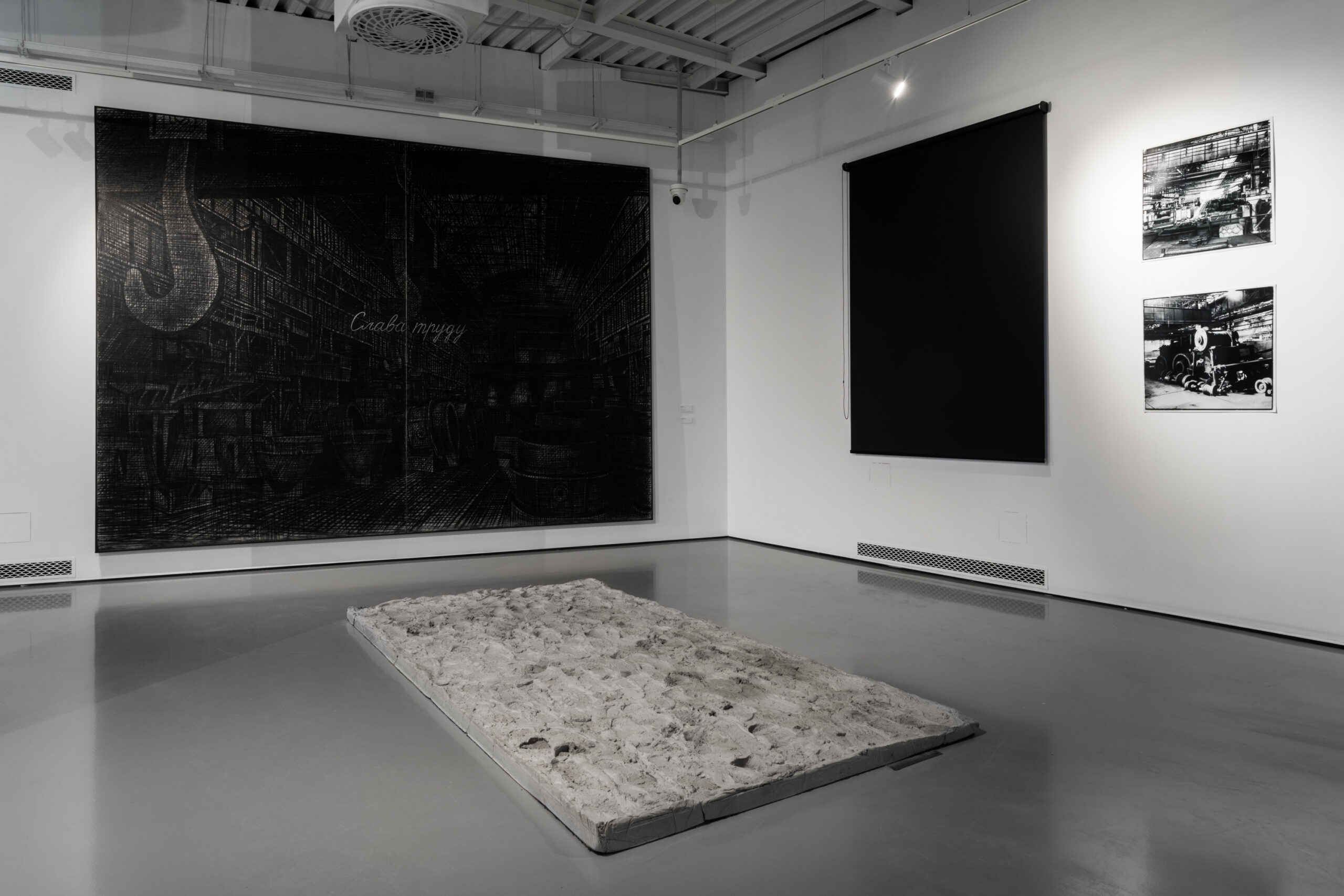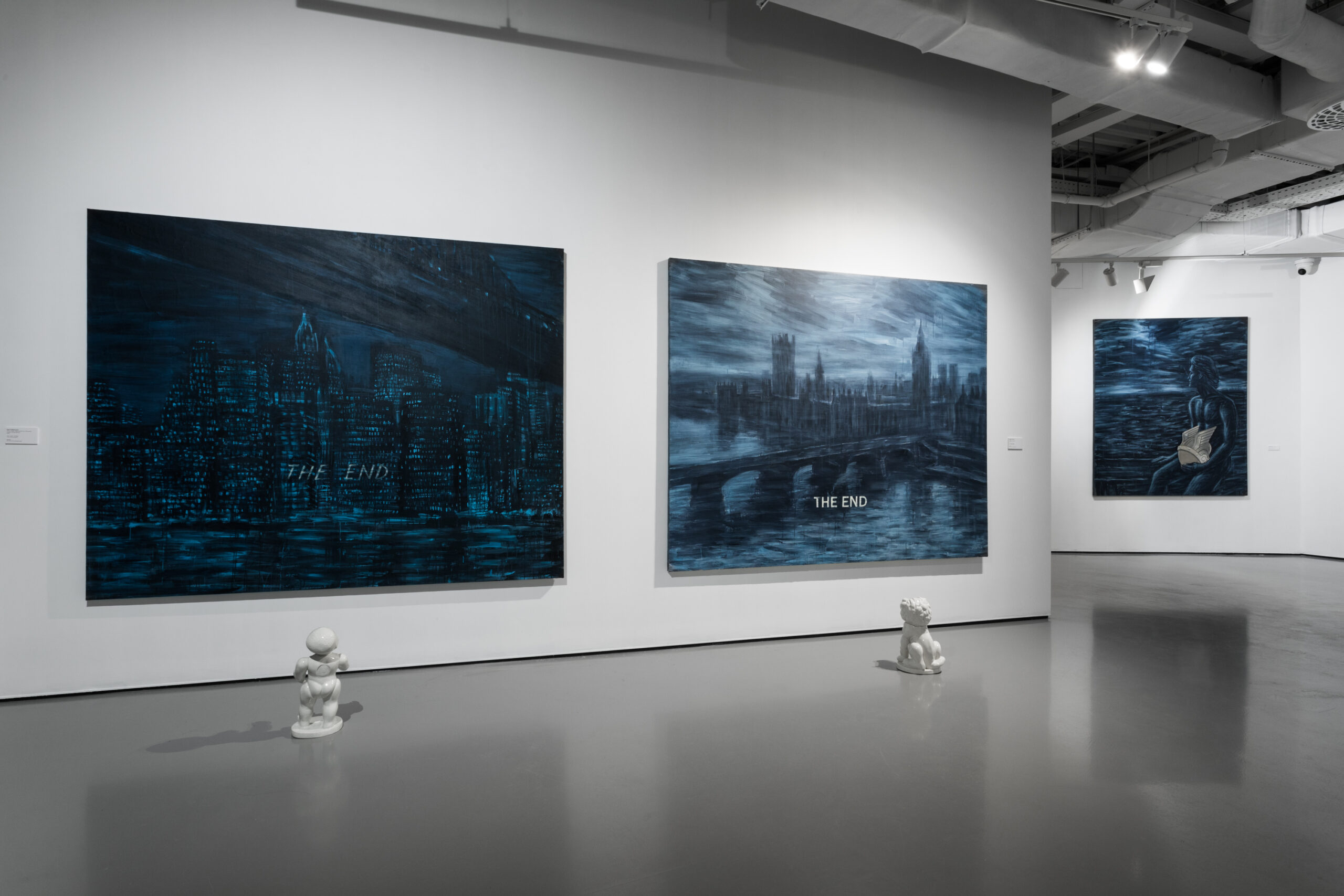
Unity. Harmony. Beauty. Academy of the Past.
EXHIBITION DESCRIPTION
SISTEMA GALLERY presents a retrospective of Yuri Shabelnikov, one of the key artists of the The South Russian New Wave of the 1980s-1990s, curated by Nadya October. The exhibition “Unity. Harmony. Beauty. Academy of the Past” will be the artist’s first retrospective, and will include over 20 paintings and objects from key series of the 2000s: “To the Soldiers of Labor”, “The End of the Film”, “Requiem of the Will”, “Esoteric Football” and “Bible-mail”, among which there will be works from the collection of the Moscow Museum of Modern Art and the private collection of Vladimir and Liana Smirnova. The series have not been displayed in Russia for about 10 years, and have never been exhibited collectively. The exhibition is a precursor to the future museum retrospective of the artist, which will allow to present and comprehend his creative heritage in the fullest possible way. Yuri Shabelnikov’s paintings and graphics of the 2000s presented at the exhibition, monochrome and cinematic, create a sense of solemnity and fatality. The series is associated with a reflection on the tide of history, and the paintings are reminiscent of the shadows of the great past that inexorably accompany us.
The title of Yuri Shabelnikov’s exhibition refers to the artist’s first monochrome series “Necroacademy” 1995, where the slogan “Unity. Harmony. Beauty” was carved out of metal. The slogan is a postulate of the academic canon, its totalitarian form, the rigidity of which is conditioned, among other things, by its main subjects – historical ones.
In Yuri Shabelnikov’s paintings and graphics, built according to classical canons, tension and dynamics are set by the rapid broad strokes and lines, his work with figurativism as with abstraction. The artist’s visual style combines the academic Soviet school and deep knowledge of the art of the Russian avant-garde and Western painting of the second half of the XX century. At art school in the 1980s, Shabelnikov experimented with cubo-futurism, and his influences in art were Willem de Kooning, Robert Rauschenberg and other classics. Out of this range of artists, Yuri Shabelnikov’s painting series of the 2000s, which became the culmination of his work, can be compared to the works of Anselm Kiefer, but not in texture, but in monumentalism, monochrome dark coloring, work with space and plastic solutions.
Both of these artists work with historical narratives, the drama of a great history, and this is what largely determines their methods. The choice of the large-scale format of the works reflects the overwhelming ponderousness of the epochs, where a person is either of no importance or is like a featureless monument. Shabelnikov calls the grey color, which runs through the work of both authors, “the fog of the past”; it shows that something that has existed or is coming to an end is in front of us. Lifeless, cold, but still filled with the energy of historical symbols.
In his works, Yuri Shabelnikov, like Anselm Kiefer, takes the story beyond the boundaries of the plane, adding “artifacts” – objects, sculptures – to the works. On the one hand, this creates the effect of staginess, presenting the story as a scenery. On the other hand, “artifacts” as well as inscriptions give additional meanings to realistic stories: both human and sacred, as something irrational. At the same time, Shabelnikov is both minimalistic and conceptual in his “mise-en-scène.” In fact, these additions to his pathetic painting do not enhance, but shoot down the pathos of “sacralizing the past”, adding a sometimes deeply hidden irony that welcomes the viewer to reflect. Shabelnikov’s style lies between the plastic and conceptual methods of work, which was largely influenced by the experimental era of Moscow in the 1990s, when painting once again “died”, giving way to installations and the art of action.
The period of the 2000s, when Yuri Shabelnikov creates his series of works, is the beginning of the new millennium, a time of widespread appeal to comprehend not only the history of the 20th century, but the fate of humanity as a whole, a surge of superstitions and predictions, which gave rise to many scenarios on the theme of the “end of the world” in popular culture. Shabelnikov echoes the time, covering the range from the Soviet heritage to biblical plots, reflecting the leitmotif of the beginning of the century in his works – the feeling of the stagnant, lasting end of history.

Yuri Shabelnikov was born in 1959 in Taganrog, lives and works in Moscow since the 1990s. At an early age studied at the Taganrog Children's Art School of Leonid Stukanov. Graduated from Rostov State Pedagogical University (1977-1979), and then from Rostov Art School named after M. Grekov, the Faculty of Painting (1979-1982). Took part in the Rostov “Association of Art or Death” in the late 1980s, which also included Avdey Ter-Oganyan, Valery Koshlyakov, Alexander Sigutin and others. Since 2005 has been teaching "Current Practices of Contemporary Art" at the School of Contemporary Art "Free Workshops" at the Moscow Museum of Modern Art. Since 2020 has been teaching "Contemporary Painting", the Master's program at HSE ART AND DESIGN SCHOOL.
View artist's page












